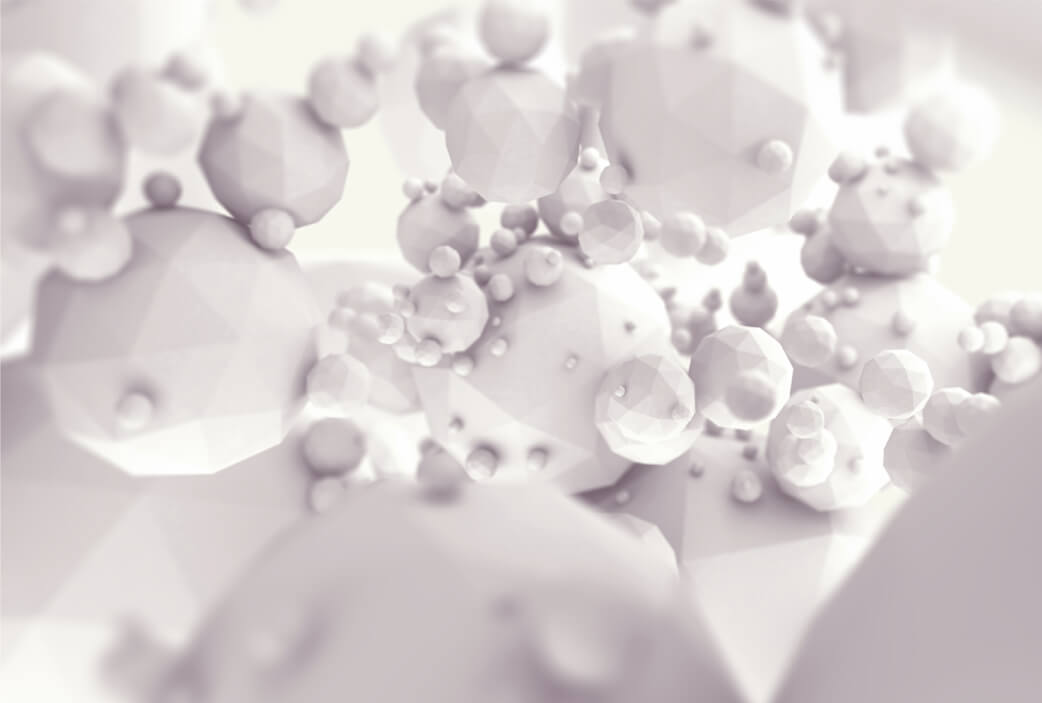BIOSAFE is a silane-quat antimicrobial that imparts bacteriostatic, fungistatic, and algistatic properties to coatings and resins for manufactured goods. It is available as a powder, solvent or aqueous solutions. With proper integration, BIOSAFE products have high antimicrobial performance in ISO and ASTM testing. The active ingredient in the BIOSAFE Antimicrobial was developed and registered with the EPA in the mid 1970’s, and has since been widely utilized in numerous applications for over 35 years. BIOSAFE has expanded the breadth of applications and manufacturing processes by removing the VOC’s and making it available in a new polymeric powder. is powder, similar to its solvent- based predecessors, can be formulated into coatings, but unlike its predecessors, the powder can be compounded with polymer resins.
The antimicrobial, when properly incorporated in accordance with the instructions and specifications provided, imparts a protective bacteriostatic, fungistatic and algistatic surface on substrates to prevent deterioration and discoloration caused by fungi, prevent algae growth and inhibits the growth of odor-causing bacteria. It is durable, leach resistant, and non-migrating. It does not create the conditions that promotes the development of resistant microorganism.
The active ingredient in BIOSAFE forms a colorless, odorless, positively charged polymer that molecularly bonds to your product’s surface. The strong positive charge disrupts the cell membrane of all microorganisms that come in contact with the active surface, thereby causing their cytoplasm and organelles to leak out. It resembles popping a water balloon. Because of this physical kill mechanism, BIOSAFE does not promote the development of drug resistant superbugs.
The demand for antimicrobial agents is on a steady rise and will continue to grow in the coming years. The conventional antimicrobial agents are silver based or triclosan based, each of which have their own disadvantages either in terms of cost or leaching from the treated surfaces and ending up in the water stream.
Biosafe® is a new class of anti-microbial which is derived from organo- functional silanes. Not only does Biosafe® have the anti-microbial properties, but it also has the unique properties of a silane to be able to covalently bond to a substrate.
Biosafe® in its powder form can also be used as an additive in coating formulations or compounded with plastics to create materials that are inherently anti-microbial. The ability to covalently bond to a substrate prevents Biosafe® from leaching.
Biosafe® does not display any color change which is a common problem with the silver based antimicrobial agents. Details on the wide range efficacy of action for Biosafe® will be presented along with its comparison to the most commonly used antimicrobial agents.

A microbe’s only protection from the outside world, the cell wall, is about 20 nanometers thick. 1/1000th the thickness of a plastic grocery bag, thin and vulnerable.
Yet most antimicrobial technologies are designed to pass right through the cell wall and attempt to poison the microbe from the inside, interfering with its metabolism and altering its DNA. This leads to mutations and resistant-adaptive superbugs! What a bad idea! Silver and Triclosan, both chemicals that operate in this manner, are technologies that have increasing health and safety concerns globally, both for toxicity and mutation and adaptation of super-bugs.
BIOSAFE is not metabolized by cells, it creates a network of charged particles that pop cells like a balloon, on contact. The technology takes advantage of the weakness of the cell wall and ruptures it with this physical/electrical force. BIOSAFE’s invisible coating adheres to hard surfaces and fabrics, and is ready to destroy any microbes that come in contact with it. What’s more, it provides durable, long lasting protection for 30 days. This physical rupturing of the cell wall is the best way to kill a microbe. It does not lead to resistant superbugs, and the active is not leached into the environment or person, as occurs with silver and triclosan technologies.
Antimicrobials are not all created equal. BIOSAFE is the only antimicrobial polymer in its class that provides unmatched safety and performance.
BIOSAFE’s powder and water based solutions are registered with EPA’s Antimicrobials division as EPA Reg. No. 83019-1,2,3
Antimicrobial additives for surfaces and textiles perform differently and are regulated differently than sanitizers or disinfectants. Antimicrobial “additives” are considered to be microbiostatic agents that protect products, not people, per EPA regulations. The key distinction is that these are non-health claims.
BIOSAFE is used to protect any material or textile, under its approved uses, to mitigate or stop the growth of product damaging microbes. Key considerations regarding the end-product’s performance include its environment, the wear- ability of the surface, and the degree of microbial control needed to achieve the product’s purpose.
When deciding to use an antimicrobial additive, the first thing to consider is the required product performance and how marketing claims will communicate that performance. is is the common starting point for all antimicrobial products. The formula used for a product controlling algae in water lines will differ from the formula controlling either odor-causing bacteria in a refrigerator gasket or damaging mold and mildew in building materials. The activity of a microbiostatic treatment on a bulk surface or textile, such as BIOSAFE, are verified by standardized industry methods.
Test methods commonly used to determine the antimicrobial activity of solid treated articles are:
JIS Z 2801 – a method where microbes are inoculated onto an antimicrobial surface and covered for 24hrs, and survivors are counted.
ASTM E2149 – a method where the material is immersed and shaken in a microbial solution for 1hr, then removed, and surviving organisms are counted.
Third party verification is available from labs that perform this type of “treated article” testing.
Please contact us for recommendations of independent third party labs that are EPA and FDA compliant.
HM4100 is polymeric powder that may be compounded into plastics, mixed into coatings, and dispersed in water.